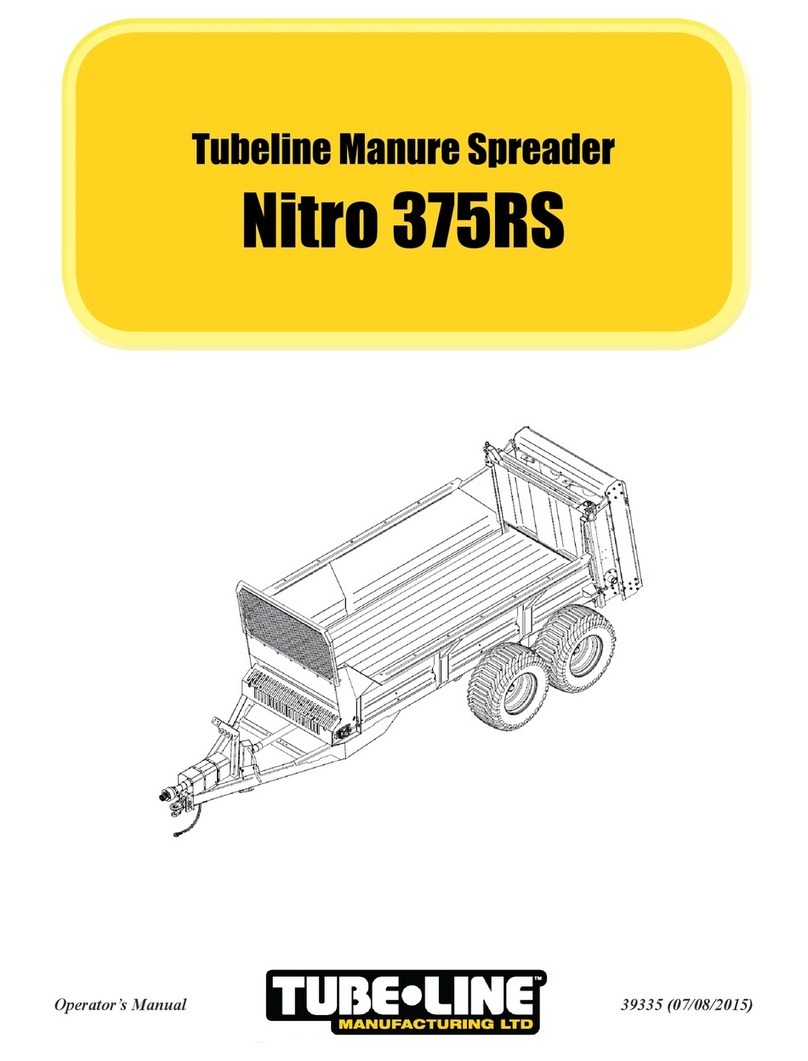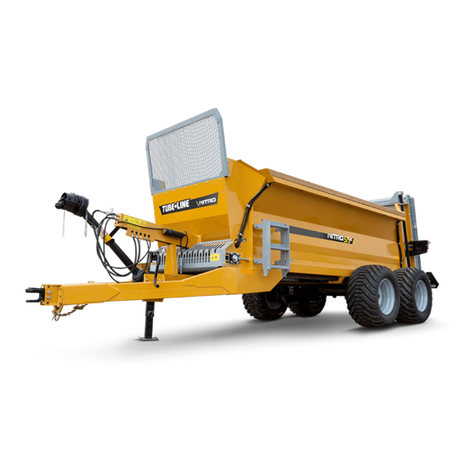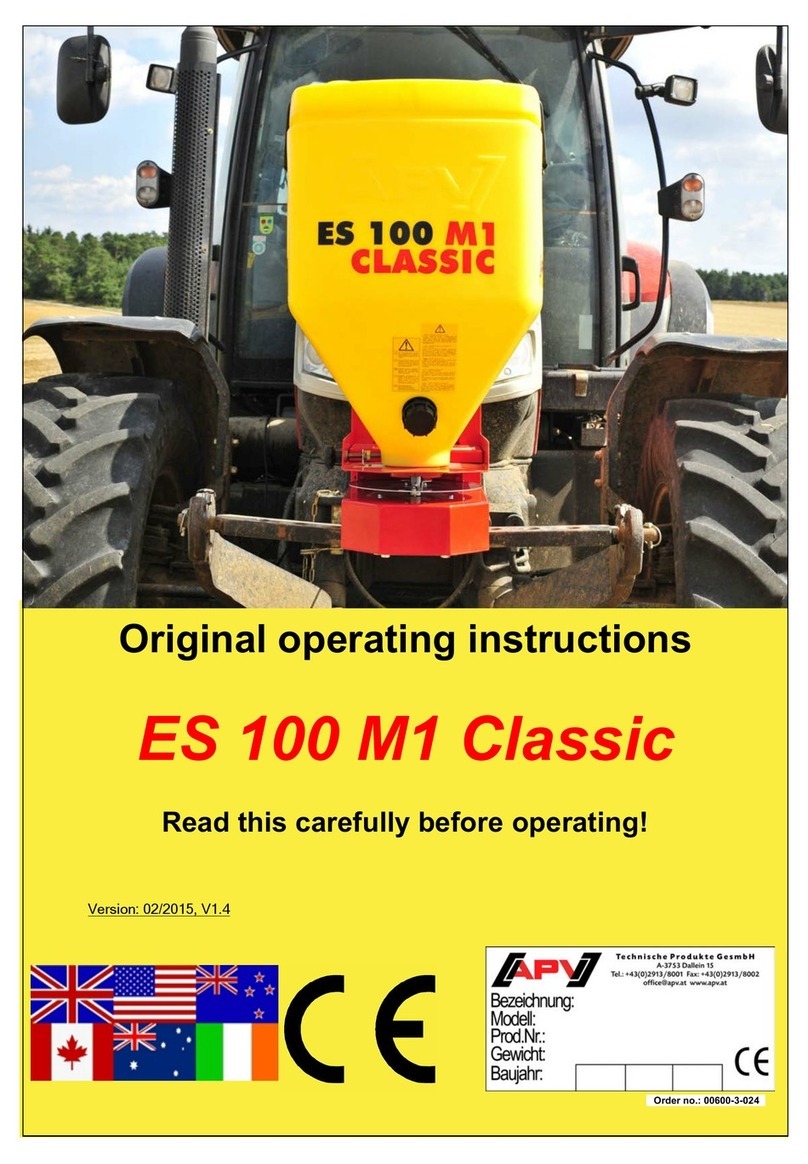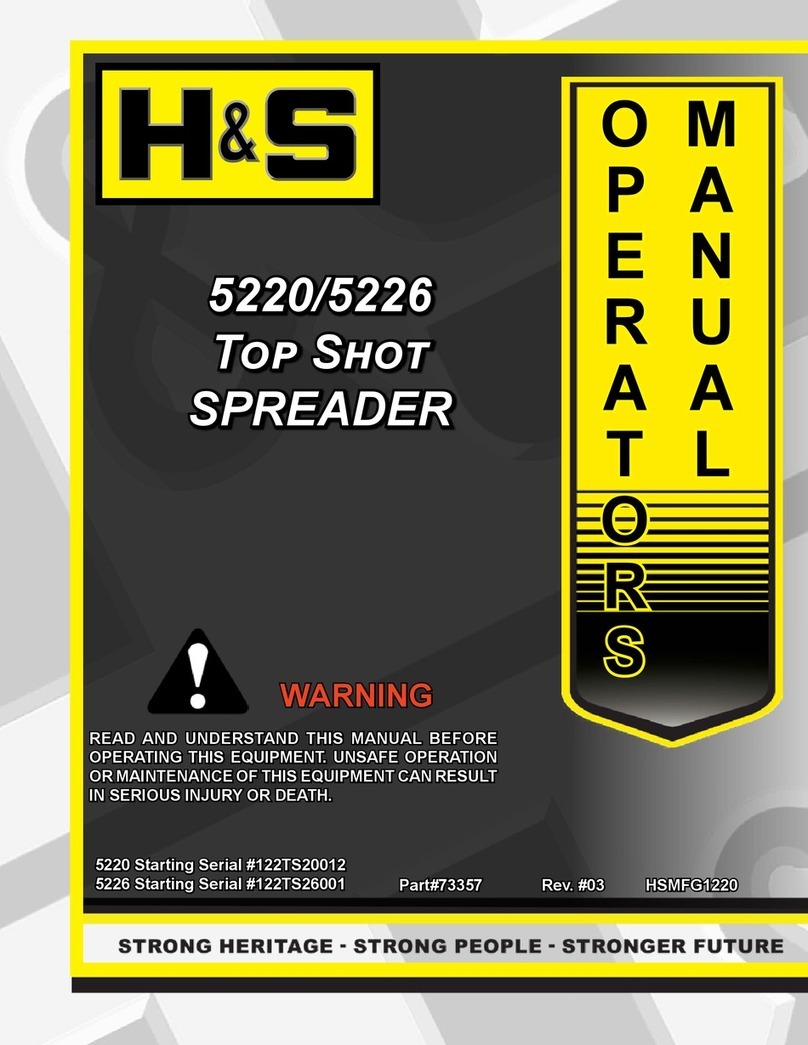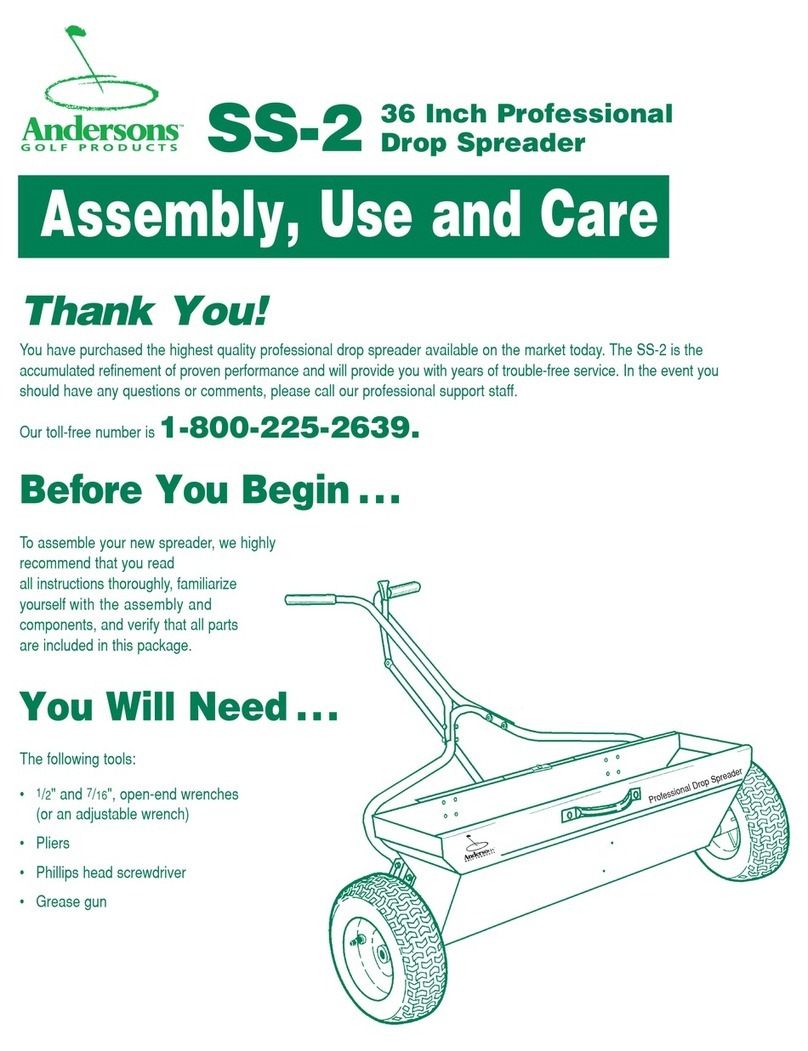
Nitro 950 -
Section 1 - Safety
1-3
A Word To The Operator
It is YOUR responsibility to read and understand
the safety section in this book before operating
the Nitro Manure Spreader. You must ensure that
you and anyone else who is going to use, main-
tain or work around the Nitro Manure Spreader
be familiar with the use, maintenance procedures
and related safety information contained in this
manual. Remember that YOU are the key to safe-
ty. Good safety practices not only protect you, but
also the people around you. Most accidents can
be prevented. Do not risk injury or death by ignor-
ing good safety practices.
1. Study the features in this book and make them
a working part of your safety program. Keep in
mind that this safety section is written only for the
Nitro Manure Spreader.
2. Nitro Manure Spreader owners must give
operating instructions to operators or employees
before allowing them to operate the machine, and
at least annually thereafter per OSHA (Occupa-
tional Safety and Health Administration) regula-
tion 1928.57
3. The most important safety device on this
equipment is a SAFE operator. It is the operator’s
responsibility to read and understand ALL Safety
and Operating instructions in the manual and to
follow these.
4. A person who has not read and understood all
GLUHFWLYHDQGVDIHW\LQVWUXFWLRQVLQQRWTXDOL¿HG
to use the Nitro Manure Spreader. An untrained
operator exposes himself and bystanders to pos-
sible serious injury or death.
5. Practice all other usual and customary safe
working precautions and above all ;
REMEMBER !
SAFETY IS YOUR RESPONSIBILITY. YOU CAN
PREVENT SERIOUS INJURY OR DEATH.
6. This safety section is intended to point out
some of the basic safety situations that can be
encountered during the normal operation and
maintenance of the Nitro Manure Spreader, and
to suggest possible ways of dealing with these
situations. This section is NOT a replacement for
other safety practices featured in other sections
of this book. General Safety
1. Read and understand the Operator’s Manual
and all safety signs before operating, maintaining,
adjusting or cleaning the Nitro Manure Spreader.
2. All equipment has a limit. Make sure you un-
derstand the speed, brakes (additional option),
stability and load characteristics of the Nitro Ma-
nure Spreader and your tractor before you start.
3. Make sure the tractor is in proper operat-
ing condition as stated in the tractor Operator’s
Manual. The tractor must have enough weight
and braking capacity, especially when operating
on uneven terrain.
WARNING !
Only use a tractor
with a ROPS cab and seat belt.
+DYHD¿UVWDLGNLWDYDLODEOHIRUXVHVKRXOGWKH
need arise and know how to use it.
+DYHD¿UHH[WLQJXLVKHUDYDLODEOHIRUXVH
should the need arise and know how to use it.
6. NEVER allow riders. Keep others away from
your work area.
7. Wear appropriate protective gear. This list
includes but is not limited to:
• Protective shoes with slip-resistant soles
• Protective glasses
• Hearing protection
• 5HVSLUDWRURU¿OWHUPDVN
8. Install and secure all guards before starting.
9. Turn machine off, stop and disable engine,
remove ignition key and place in your pocket and
wait for all moving parts to stop before servicing,
adjusting, repairing, or unplugging.
10. Clear area of people, especially small chil-
dren, before using the unit.








